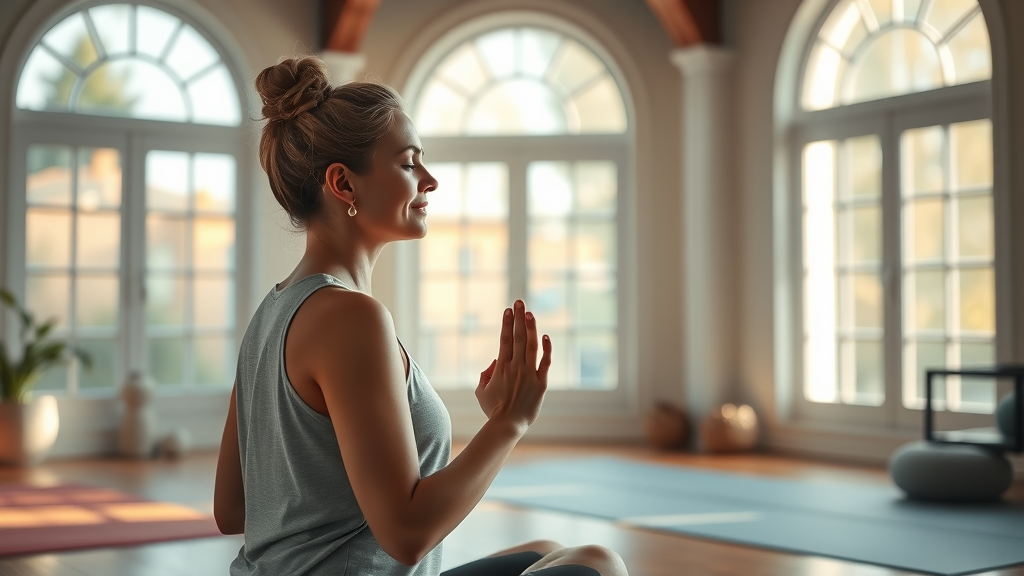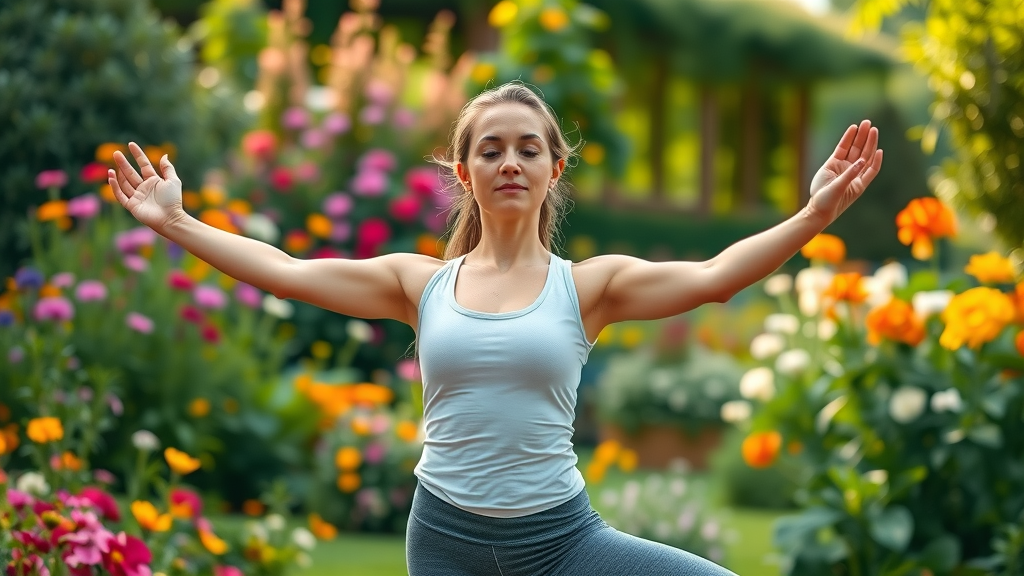Did you know that practicing mindfulness in yoga not only enhances your physical abilities but also promotes mental well-being? In a frenetic world where distractions abound, integrating mindfulness into your yoga practice can be a transformative journey. Let’s explore expert insights and practical strategies to enrich your practice and deepen that vital connection between mind and body.
Understanding Mindfulness in Yoga
Defining Mindfulness in Yoga Practice
Mindfulness in yoga is all about being present and fully engaging with your breath and movements. It encourages practitioners to maintain awareness not just of their physical posture but also of their mental state. In doing so, we gain insights into our emotions and patterns of thinking, essentially unlocking the potential for profound self-discovery and growth.
Moreover, mindfulness allows us to cultivate a sense of patience and compassion towards ourselves, enhancing the overall experience of yoga. Rather than viewing yoga merely as a series of physical exercises, it encourages us to see it as a holistic practice that touches every aspect of our lives.
The Connection Between Mindfulness and Movement
The synergy between mindfulness and movement in yoga is essential for achieving a truly fulfilling practice. Each asana (posture) serves as an opportunity to connect with breath, thus deepening our awareness and enhancing bodily sensations. This connection fosters a sense of flow, making the transitions between poses more fluid and intentional.
By focusing on the breath while moving, we anchor ourselves in the present moment and learn to listen to our bodies. This enhances our ability to respond to challenges, both on and off the mat, with a strengthened sense of presence and clarity.

Benefits of Mindfulness in Yoga
Enhancing Mental Health Through Mindful Yoga
One of the key benefits of mindfulness in yoga is its positive impact on mental health. Regular practice can reduce symptoms of anxiety, depression, and stress, leading to a greater sense of calm and balance. By fostering an awareness of our thoughts and emotions, we're better equipped to navigate life's ups and downs.
Mindful yoga has also been shown to improve focus and concentration. By training our minds to stay present, we can break the cycle of rumination and worry, providing relief from chronic stressors that inhibit our happiness and well-being.

Physical Benefits of Mindfulness in Yoga
Beyond mental health, the physical benefits of integrating mindfulness into yoga practice cannot be overstated. Committing to mindfulness allows practitioners to cultivate better body awareness, which is crucial for preventing injuries and improving posture. You may find you can access deeper stretches and movements when you tune in to your body’s signals.
Further, cultivating mindfulness enhances the overall effectiveness of yoga in terms of flexibility, strength, and endurance. Engaging fully with each pose means you are likely to achieve greater progress over time, as you learn to listen and adapt according to what your body needs.

Expert Insights on Mindfulness in Yoga
Adriene Mishler's Perspective on Mindfulness
Adriene Mishler , the driving force behind Yoga With Adriene, encapsulates the essence of mindfulness beautifully: "Yoga is really the art of waking up. Getting back to the true you. It can be that simple." This statement reflects the simplicity that can be achieved by integrating mindfulness into your yoga practice.
“Yoga is really the art of waking up. Getting back to the true you. It can be that simple.” - Adriene Mishler, Yoga With Adriene
Practical Tips for Incorporating Mindfulness
Incorporating mindfulness into your yoga practice can be as simple as focusing your breath in each pose. Here are some practical tips:
- Always begin class with a few moments of stillness to center your thoughts.
- Use your breath as a guide—let each inhalation and exhalation sync with your movements.
- Practice gratitude for what your body can do in the moment rather than focusing on what it cannot.

Common Misconceptions About Mindfulness in Yoga
Debunking Myths Surrounding Mindfulness
While the concept of mindfulness in yoga is becoming more mainstream, misconceptions still abound. One common myth is that mindfulness is about emptying the mind of thoughts. In reality, it’s about observing thoughts without judgment and returning to the present moment when you notice your mind wandering.

Clarifying the Difference Between Yoga and Mindfulness Meditation
Another misconception is that yoga and mindfulness meditation are the same. While both practice awareness and presence, yoga is a physical practice that incorporates movement, while mindfulness meditation is about stillness and breath awareness. Each has its unique benefits and can complement one another beautifully.
Practical Steps to Enhance Your Mindfulness Practice
Creating a Mindful Yoga Routine
To create a mindful yoga routine, start by designing a flow that allows ample time for each pose. Integrate moments of stillness and deep breathing between postures so you can really connect with your body. Remember that quality is often more important than quantity when it comes to practicing yoga mindfully.
For a guided experience, consider exploring Yoga Camp - Day 15 with Adriene, which focuses on integrating mindfulness into your practice.

Mindfulness Exercises to Try at Home
You can try simple mindfulness exercises at home, such as:
- Breathe deeply for a few minutes, focusing solely on the sensation of the breath entering and leaving your body.
- Practice a gentle sequence of yoga poses, taking time in each posture to explore how the body feels.
- End your practice with a few minutes of sitting in silence, reflecting on your experiences during your practice.
For a more invigorating session, try the Core Power Wake Up routine, which combines mindfulness with energizing movements.

People Also Ask
What are the 3 C's of mindfulness?
The three C's of mindfulness are Calm, Clarity, and Compassion. These principles guide us in our mindfulness practice, fostering a balanced approach to life.

What are the 4 principles of mindfulness?
The four principles of mindfulness include: 1) Attention to the present moment, 2) Awareness of thoughts and feelings without judgment, 3) Acceptance of experiences as they are, and 4) A sense of compassion for oneself and others.
What is the difference between yoga and mindfulness meditation?
As mentioned earlier, yoga incorporates movement and postures along with breath awareness, while mindfulness meditation focuses primarily on breath awareness and stillness.
Does yoga count as mindfulness?
Yes, yoga can certainly count as a form of mindfulness practice, especially when integrated with a focus on breath and awareness.
Conclusion: Embracing Mindfulness in Your Yoga Journey
As you embark on or continue your yoga journey, remember that mindfulness in yoga is not just a practice—it's a way of life. Implementing mindful awareness into your routine enriches not only your yoga practice but your daily existence.
Call to Action
“The process is the candy. Enjoy!” - Adriene Mishler, Yoga With Adriene
Join the global community at Yoga With Adriene and explore the countless resources available to deepen your mindfulness in yoga. Let’s make yoga a joyful experience together!
What You'll Learn
- Understanding the concept of mindfulness in yoga
- Benefits of incorporating mindfulness into your yoga practice
- Expert insights and practical tips for enhancing mindfulness
- Common misconceptions about mindfulness in yoga
- Steps to create a mindful yoga routine
Key Takeaways
- Mindfulness in yoga enhances mental and physical well-being.
- Practicing mindfulness can lead to a deeper connection with oneself.
- Misconceptions about mindfulness can hinder practice.
- Simple steps can be taken to incorporate mindfulness into daily yoga.
FAQs
What are the benefits of mindful yoga?
Mindful yoga enhances mental health, improves focus, increases body awareness, and fosters a deep sense of connection to oneself.
How can I practice mindfulness in my daily life?
Practicing mindfulness in your daily life involves being present in the moment, paying attention to your thoughts and feelings without judgment, and incorporating moments of stillness and reflection throughout your day.

 Add Row
Add Row  Add
Add 




Write A Comment